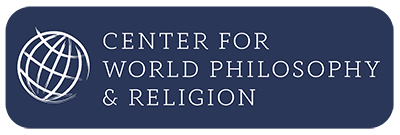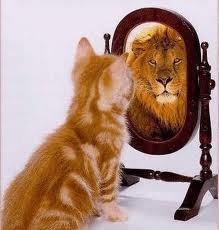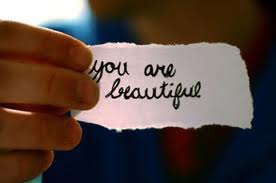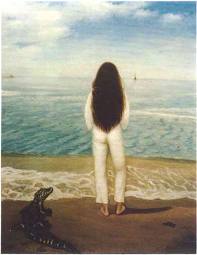Daily Wisdom: Void and Eros

The truly great dancer – like all lovers – flows with the fullness of being. She trusts the universe. She knows she will always fall right so she allows herself to fall into the erotic rhythm of life. To do so she must first empty herself to receive the flow.
The dance of the Hebrew mysteries is the movement between emptiness and fullness, void and eros, absence and Shechina.
To dance with the Shechina is to live and love erotically in all the arenas of our lives – beyond the merely sexual. Eros is to live the life of a lover in every room of our being. That is what it means to be holy. Eros is to open your eyes and see for the first time the full beauty and gorgeousness of a friend. To be fully present to what is. It is to smell the richness of aroma, and to feel the fullness of throbbing desire, to taste the erotic Shechina experience that connects you with every being. It is to feel the palpable love which dissolves the walls of ego, anger and anxiety.
The worlds of music, dance, and, most of all, orgasm, allow us glimpses of our higher reality. Here again the sexual models the erotic. The erotic being the experience on the inside of reality, where all of being yearns for connection and every living thing knows that it has a patch called home, which is part of the great quilt of the universe. Love is the Eros of connection – the underlying interdependence of things, the bond between all living things, the emotional ether in which we all live.
The Erotic and the Holy
Marc Gafni
For more information on private study or to book a public teaching, contact Dr. Marc Gafni at support@ievolve.org

 The language of God is man. We are not just God’s messengers, we are God’s language and voice, the means by which she shares her message. This idea becomes a little easier to access in light of quantum physics. One of the essential mind-bending breakthroughs in quantum physics is that the observer is part of the experiment. That is to say, the perceiver influences the outcome of the experiment. Said more broadly, perception not only observes reality, it creates reality. To say that love is perception is therefore to say that love–far more than a mere emotion–is the erotic creative force which in-forms all of being.
The language of God is man. We are not just God’s messengers, we are God’s language and voice, the means by which she shares her message. This idea becomes a little easier to access in light of quantum physics. One of the essential mind-bending breakthroughs in quantum physics is that the observer is part of the experiment. That is to say, the perceiver influences the outcome of the experiment. Said more broadly, perception not only observes reality, it creates reality. To say that love is perception is therefore to say that love–far more than a mere emotion–is the erotic creative force which in-forms all of being. I want to know if you can live with failure, yours and mine,
I want to know if you can live with failure, yours and mine,
 The most important thing we can ever tell someone else is, “You are beautiful.” We were all made conveniently equipped with built-in mirrors – our eyes. They are the reflecting pool in which the person before us beholds herself. It is up to us to choose what she will see reflected there. To be a lover is to make sure that whoever looks into your mirroring eyes will feel the embracing energy of “You are beautiful”.
The most important thing we can ever tell someone else is, “You are beautiful.” We were all made conveniently equipped with built-in mirrors – our eyes. They are the reflecting pool in which the person before us beholds herself. It is up to us to choose what she will see reflected there. To be a lover is to make sure that whoever looks into your mirroring eyes will feel the embracing energy of “You are beautiful”. Eros is to be on the inside, including the inside of your desire. What being on the inside does is invite a person to clarify his desires, yet not transcend them. True desire is attained through the deep meditation in which you access the internal witness. From this place of detachment, you survey with penetrating but loving eyes all of your desires. This place of internal witness allows you to move beyond an addictive attachment to any particular one. At that point the person engaged in Birur– clarification – does not abandon desire. Rather she moves to connect to those desires which were truest to her deepest and most authentic self. It is in the empty space between the spasm and the desire that the person is born.
Eros is to be on the inside, including the inside of your desire. What being on the inside does is invite a person to clarify his desires, yet not transcend them. True desire is attained through the deep meditation in which you access the internal witness. From this place of detachment, you survey with penetrating but loving eyes all of your desires. This place of internal witness allows you to move beyond an addictive attachment to any particular one. At that point the person engaged in Birur– clarification – does not abandon desire. Rather she moves to connect to those desires which were truest to her deepest and most authentic self. It is in the empty space between the spasm and the desire that the person is born. Whenever we keep eros confined to one narrow frame of being, while de-eroticzing the rest of the picture – the Shechina remains in exile. Sex is only one of the places where we exile the erotic. There is a wonderful Balinese saying which goes something like, “We do not have art – we do everything as beautifully as we can”. When we build ugly cities where beauty is abused and people are depersonalized and then build a beautiful art museum, the Shechina is in exile. We exile the eros of beauty to the constricted precincts of formal art.
Whenever we keep eros confined to one narrow frame of being, while de-eroticzing the rest of the picture – the Shechina remains in exile. Sex is only one of the places where we exile the erotic. There is a wonderful Balinese saying which goes something like, “We do not have art – we do everything as beautifully as we can”. When we build ugly cities where beauty is abused and people are depersonalized and then build a beautiful art museum, the Shechina is in exile. We exile the eros of beauty to the constricted precincts of formal art. In biblical mysticism love and oneness are identical. In Hebrew, there is a mystical technique called “gematria” in which each letter, and thus each word, has a numerical value. The Hebrew word for love, ahava, has a numerical value of thirteen. Echad, meaning one, also has a numerical value of thirteen. To the Kabbalistic mind, this coincidence of number is more than coincidence. It is as if it is a mystical law has been encoded into the letters of these words. Love is Oneness and Oneness is Love. One is but another word for the erotic interconnectivity of all being.
In biblical mysticism love and oneness are identical. In Hebrew, there is a mystical technique called “gematria” in which each letter, and thus each word, has a numerical value. The Hebrew word for love, ahava, has a numerical value of thirteen. Echad, meaning one, also has a numerical value of thirteen. To the Kabbalistic mind, this coincidence of number is more than coincidence. It is as if it is a mystical law has been encoded into the letters of these words. Love is Oneness and Oneness is Love. One is but another word for the erotic interconnectivity of all being.